A stewpan: what is it for, how is it different from a frying pan and how to choose?

There are never many kitchen utensils. Its producers are striving to modernize their products in order to speed up the cooking process and improve the quality of food.
The stewpan is a marvel of modern cuisine. Its reservoir allows you to increase the number of pledged products, and the material ensures their high quality and usefulness at the outlet. This multifunctional device can replace several types of kitchen utensils at once, as it is suitable for preparing almost any culinary masterpiece.
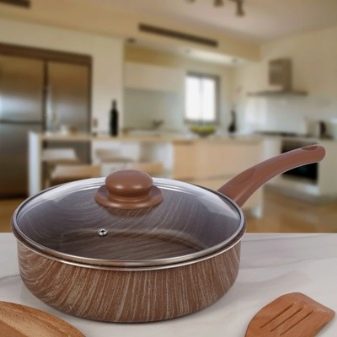

What is it and what is it for?
The stewpan got its name from the word sote. In France, they call it the technique of cooking. Its meaning is to fry the ingredients over high heat with a little oil. To do this, they have to be constantly mixed, shaking and "tossing". In a stewpan, this works reliably, as nothing falls on the floor. And clean, no oil splashes. In simple terms, a saucepan is a symbiosis of a saucepan and a frying pan. It looks like a shallow saucepan or deep frying pan. The kit almost always comes with a cover.
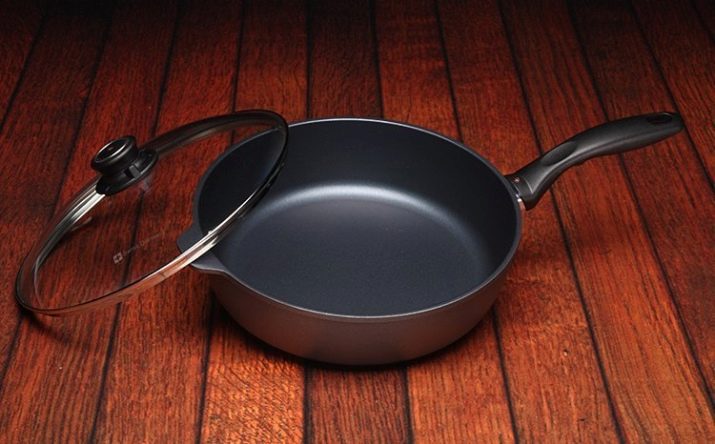
And also a handle is required. It is quite long - from 10 to 30 cm and can be detachable or soldered to the body. If it is alone, then, as a rule, it is removable. Such a saucepan is convenient for cooking in the oven. But more often there are 2 pens on it.

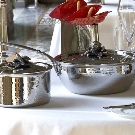

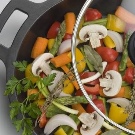
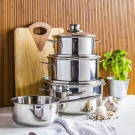
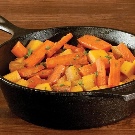
The stewpan is made of thick, durable metal, which is why it has a rather impressive weight. On average, it is 1 kg. But there are models with a weight of up to 2.5 kg.Its cover can also be made of metal or heat-resistant glass. The metal flat lid can be used as a frying pan. A characteristic feature of such dishes is the presence of straight, almost vertical sides up to 10 cm high, in contrast to a frying pan or saucepan.
That's why, If you compare a saucepan and a saucepan of the same volume, then the bottom of the saucepan will be wider, which increases the cooking area and makes the process easier. The bottom and sides of the cookware are very thick. Their thickness can reach 2 cm. However, it is this feature that distinguishes the stewpan from other kitchen utensils, allowing you to improve the quality of the prepared dish.
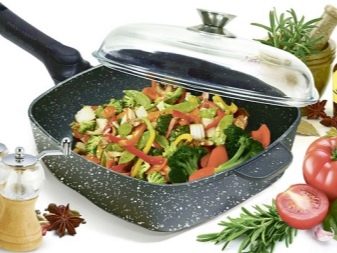
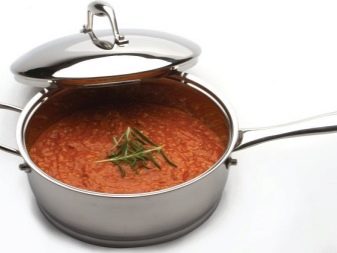
The lid in this alliance is not just a decorative item. Its task is to keep and keep warm inside the dishes for as long as possible, due to which a non-standard cooking process is carried out.
The stewpan is a versatile dish. It is suitable for any kind of food preparation. It is boiled and fried in it. However, it is primarily used for stewing, sautéing, letting go and simmering. The thick walls of the container heat up gradually, which ensures the same gradual increase in temperature inside it and long-term retention of heat.
These are favorable conditions for uniform heating of products, which contributes to their high-quality processing and preserves the taste. This makes it possible for vegetables, meat, fish to be slowly steamed in their own juice, without burning and preserving the maximum of vitamins and other nutrients.
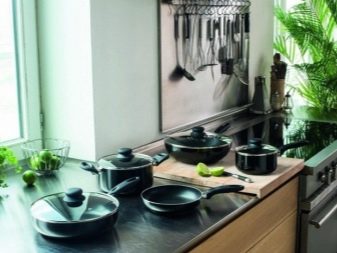
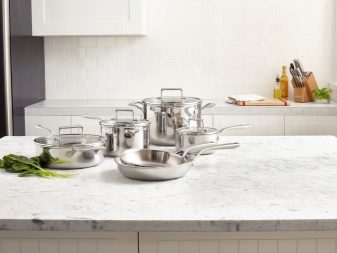
Summarizing the above, we can conclude that a stewpan is an irreplaceable thing in the household. Its "trick" is the method of preparation - all products in it are subjected to heat treatment evenly and gradually, as if in a thermal vacuum, while maintaining their useful qualities. This is achieved by the presence of:
- thick sides and bottom;
- significant side heights;
- uniform area without tapering downward;
- tight-fitting lid.
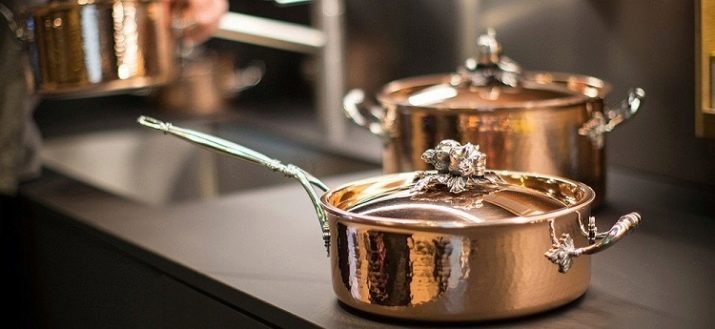
Materials (edit)
The standard raw material for making casseroles is metal. They use different variations of it: cast iron, copper, aluminum, steel. The stainless steel saucepan is very easy to use. They are lightweight, with a thick or double bottom and thinner walls. Typically, these tanks are made with a heat-resistant glass lid.
Stainless steel models heat up quickly, but they do not hold heat so long compared to other materials. In everyday life, polished steel is especially convenient. It is protected from mechanical damage and can be easily cleaned from dirt. It should be noted that steel products are of the highest class and are distinguished by a higher cost.
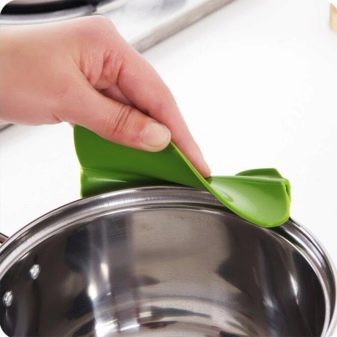
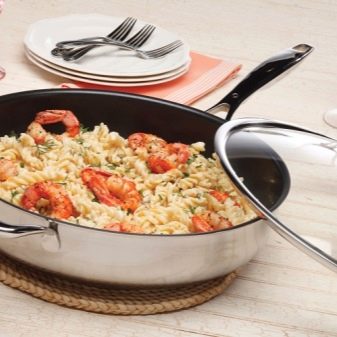
Metal saucepans are usually produced with a non-stick coating, which is applied in 4-6 layers. It is safe for health and easy to clean. A special plus of this material is the possibility of frying without adding fat. The most common non-stick coating is teflon... Most of the dishes that need protection are covered with this particular material. It is important that the coating thickness is at least 20 µm. It is applied in several ways: for example, by spraying or rolling. The second option is preferred because it is more reliable.
In addition to Teflon, other materials are used as a non-stick substance. This group includes titanium, diamond, granite coatings, models with a marble cover layer. In addition to the non-stick coating, quality products have an embossed pattern on the bottom.
This is not a decorative piece, but a way to optimize heat distribution and enhance non-stick properties.
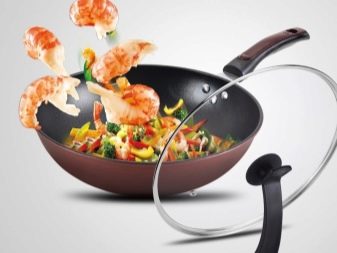
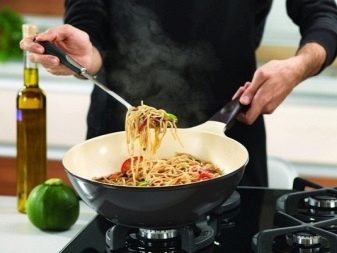
Aluminum products have two significant advantages: lightness and quick heating. But when choosing a saucepan made of aluminum, give preference to coated models. Pure aluminum raw materials have a porous structure, which greatly complicates the cleaning process. Copper saucepan has a high thermal conductivity, which is 10 times higher than aluminum and steel. Due to this, the cooking process is noticeably accelerated, and the nutrients do not have time to be destroyed. Other advantages of copper products include light weight and durability.
It is believed that food cooked in copper dishes has a special flavor. Besides, copper exhibits antibacterial properties. Along with the indisputable advantages, copper saucepans have their own disadvantages. Copper oxidizes rapidly when interacting with acids, releasing toxic substances. In addition, it is very sensitive to moisture and mechanical stress. It does not tolerate aggressive detergents that damage its surface.
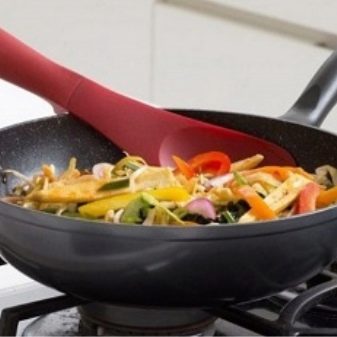
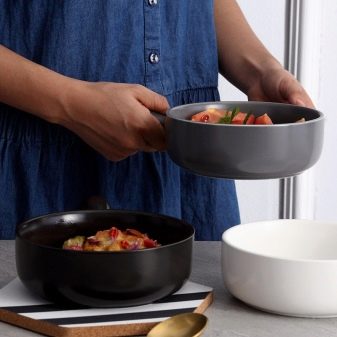
Given the negative characteristics of copper, casseroles made from copper are considered impractical and are rare. The most popular metal saucepan is cast iron. Despite its unsightly appearance, it is highly durable. Heats up quickly and retains heat for a long time - the perfect combination for a tasty and healthy meal. Contamination from its surface is removed quickly and easily.
Among the disadvantages of cast iron, one can single out a large weight and oxidation in contact with acids. But there are also combined models, consisting of 2, 4 and even 6 layers of metal. This ensures the strength of the case and protects against mechanical damage. Combination of aluminum with other metals is widespread. Aluminum is a good heat conductor. And its combination, for example, with steel, increases its strength and durability.

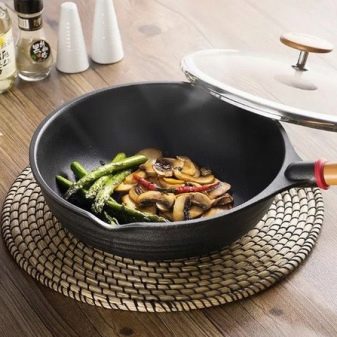
In addition to metal, ceramics and glass are used to make a saucepan. Ceramic models are loved for their aesthetic appearance. They are lightweight, but in comparison with cast iron, the cooking process in them is slower. Although the heat persists for quite a long time. Glass models are made from heat-resistant glass. And they are designed for microwave ovens.
The material from which the handles of the product are made is also important. If they are non-removable, welded to the body, then they are made from the same raw materials as the tank. The casseroles with removable handles are especially easy to use. They fit easily into the oven. And they are stored more compactly. For a removable handle, a material other than the body is often chosen.
The main criterion is to reduce the degree of its heating. Therefore, as a rule, they are made of durable plastic or wood.
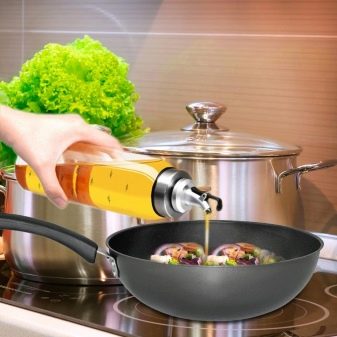
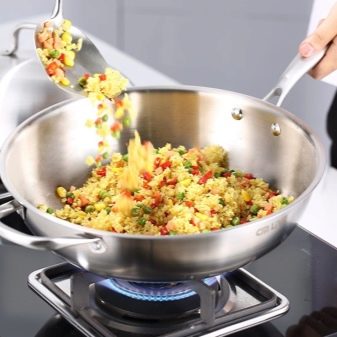
Sizes and shapes
The shapes and sizes of the stewpan are varied. First of all, they can be deep and shallow. Tanks shallow in depth are good for frying. High capacities are considered universal. It is possible to carry out any kind of processing in them. But first of all, they are intended for cooking soups, boiling any liquid and stewing. The diameter of the saucepan also varies. starting from 16 cm and reaching 36 cm.
Your choice should depend on the purpose of the cookware. If you plan to cook individual components of dishes in it, for example, sauce, cream, or just boil milk, a small saucepan with a diameter of up to 20 cm is quite suitable for you.
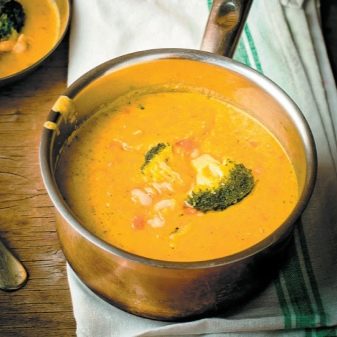
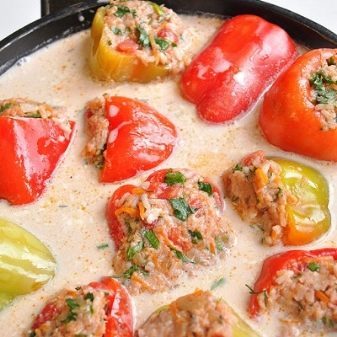
For a large family, for the preparation of main dishes, it is better to choose a larger tank. By shape, there are round, oval, rectangular and square saucepans. The round and oval saucepan is a classic of the genre. The round-shaped container is universal, since it allows you to carry out almost all types of food processing: cooking, frying, baking. The oval saucepan is ideal for stewing meat and vegetables. It is convenient to fry meat in rectangular containers, as well as bake, sauté or stew.
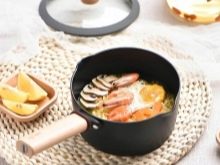
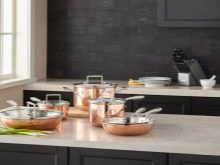
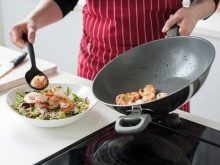
How is it different from a frying pan and a saucepan?
As already mentioned, a saucepan is a collection of pots and pans. He combined their best qualities, significantly increasing their production characteristics. The stewpan borrowed a wide bottom from the frying pan, and high walls from the pan. And combined the functions of both devices.If we talk about the differences, then the stewpan primarily stands out for its higher functionality compared to its prototypes... So, if the pan is intended mainly for frying, and the pan is for cooking and stewing, then the stewpan can fry and boil, simmer and sauté, bake.
Another difference from its counterparts is the variety of forms. Most of the frying pan and saucepan are rounded. The stewpan, as you can see from the previous chapter, has different configurations. Which also affects its properties.

The thick bottom and sides of the saucepan provide a different cooking technology than in a frying pan or saucepan. The stewpan heats up gradually, accumulates and retains heat. This makes it possible for the ingredients of the dish to undergo heat treatment evenly, without burning, without losing liquid. The dish is juicy with optimum cooking.
When cooking in a frying pan, the sides and bottom of which are much thinner, there is a high probability that the dish may burn. In a saucepan, the bottom is much smaller in diameter, and the food does not heat up well. It is also important that in a stewpan, you can cook in the oven, and on the stove, and on the hob, as well as in microwave ovens.
In general, in terms of its functions, a stewpan in everyday life can easily replace both a frying pan and a saucepan.
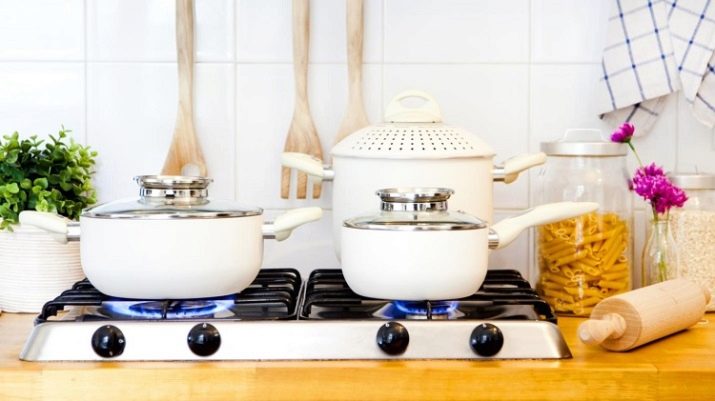
What is cooked in it?
Considering that the stewpan masterfully copes with any kind of cooking, you can use it to cook any kind of food. Its high sides allow boiling milk, cooking sauces, boiling pasta without any problems. If the volume of the container is sufficient, then it is easy to prepare soups and other first courses in a saucepan.
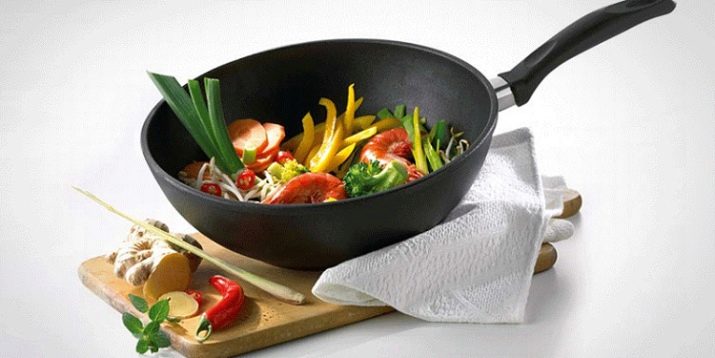
Due to its thick walls and bottom, as well as the ability to withstand high temperatures, the stewpan is used for stewing vegetables, meat, and fish. To do this, add a small amount of water to the container, bookmark the ingredients and close it tightly with a lid.
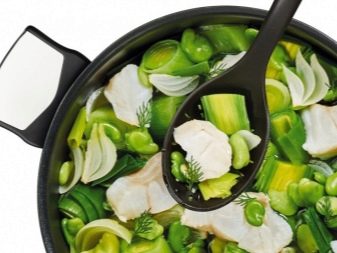
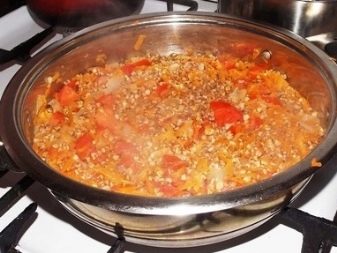
Heat is injected, but does not evaporate, but accumulates inside such a cauldron. Meat and vegetables are steamed well, retaining moisture. At the exit, the dish turns out to be juicy, aromatic, soft and preserving most of the vitamins.
And also with the help of the heat effect in the stewpan, just perfect cereals, pilaf, stews are obtained. Any pastry rises well, bakes evenly. In a stewpan with low sides, you can fry vegetables, fish, poultry, meat, including steaks. This dish is so versatile that it can bring any culinary ideas to life.
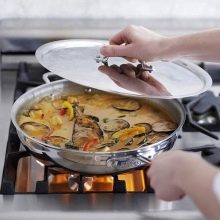

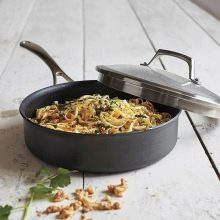
Advantages and disadvantages
The disadvantage of casseroles is considered to be a rather large weight, especially if they are made of cast iron. In some models, the manufacturers of which use low-quality raw materials, the non-stick coating may contain toxic substances. Perhaps these are all weighty shortcomings that they reproach the stewpan.
It has much more advantages:
- the ability to retain heat for a long time;
- versatility of functions;
- high taste of the dish;
- preservation of useful components during the cooking process;
- food does not burn, does not stick to the bottom;
- the protective coating is not afraid of metal devices;
- a thermostat in some models makes it easier to control the cooking process;
- profitability - there is no need to purchase a frying pan and a saucepan, since the stewpan will replace both of them;
- space in the kitchen is used more efficiently;
- in the process of frying, a minimum of fat is used;
- cooking time is shortened;
- ease of care - the container is washed with a soft sponge and liquid detergent, aggressive compounds are not used so as not to damage the coating;
- varied design.

How to choose?
In order for the chosen product to serve you for many years, carefully approach its choice. First of all, decide what function your stewpan should perform. How do you plan to cook in it: occasionally and specific compositions or daily fry and steam large amounts of food in it.Based on the purpose, set the desired size: deep or shallow, large or small. Next, select a shape.
When you have decided on its purpose and appearance, it's time to think about the material of your product. If you decide to buy a stewpan, do not try to save money.... Choose a model from quality material. Otherwise, you will not see any thermal effect, uniform heating and a tasty, high-quality dish.
Give preference to well-known brands: BergHOFF, Rondell, Vinzer and so on. In their production, they use high-quality food grade steel and have a wide range of models.
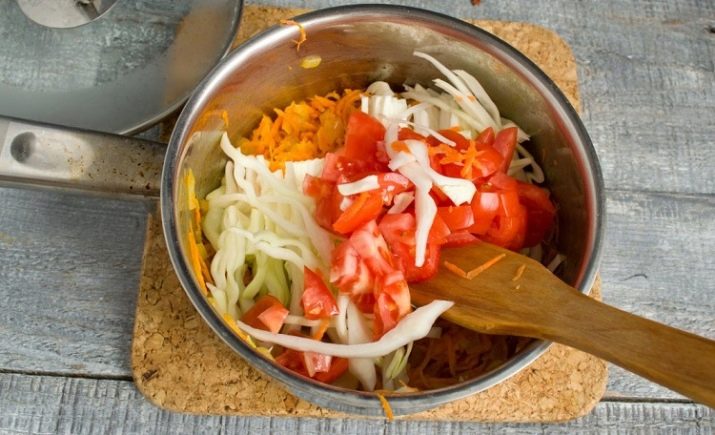
Be sure to pay attention to the presence of the non-stick coating and its composition.... It is better if it includes several layers, for example, ceramics - aluminum - teflon. It should be free of cadmium, lead and melamine. These are quite toxic substances that, when heated, are released from the coating and penetrate into food. When choosing a saucepan, make sure that the model you choose matches the type of your stove. Some examples are not suitable for induction hobs.
The option with a removable handle may be of interest to you. This variation of the saucepan is ideal for the oven. And, of course, make sure a lid is included with the container. If it is made of heat-resistant glass with a metal rim, then this will not only ensure tightness when closed, but also make it possible to control the brewing process.
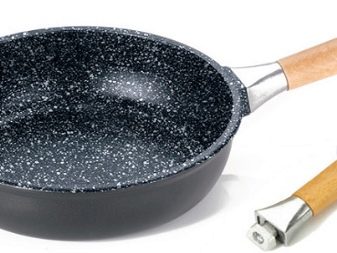
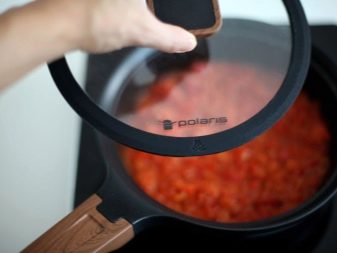
Popular brands
The stewpan is becoming increasingly common among modern housewives. And if earlier these utensils were a rarity, now they are a standard kitchen element that speeds up the preparation of food. Most of the leading brands have several models of such utensils in their arsenal. There are several undisputed leaders among them.
Rondell
Rondell is a German manufacturer specializing in the production of professional tableware and, more recently, for the home. He uses aluminum and stainless steel in his work. The production is based on innovative technologies.
Stewpan Rondell Mocco & Latte. The model is made of extruded aluminum. Has an inner 3-layer titanium and an outer non-stick coating for easy maintenance. The diameter of the container is 26 cm, the bottom is multilayer - triple stamped-fused, with microcells that preserve the juiciness of cooked dishes. The handles of the saucepan are cast, made of stainless steel with the addition of silicone. The lid is made of heat-resistant glass with a hole for steam.
Can be used on all hobs, dishwasher safe, but not oven safe.
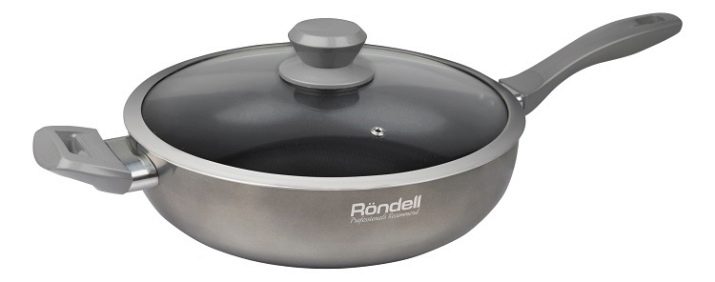
BergHOFF
BergHOFF is a Belgian company that develops both professional and household kitchen utensils. She is famous for her design developments. It is the perfect union of price and quality.
Stewpan BergHOFF Moon. Case material - stainless steel. The bottom has a multi-layer structure. The diameter of the container is 28 cm, the capacity is 4.2 liters. The lid of the saucepan is made of the same material as the body, with a hole for steam outlet, and has two non-removable handles. Suitable for all types of slabs.
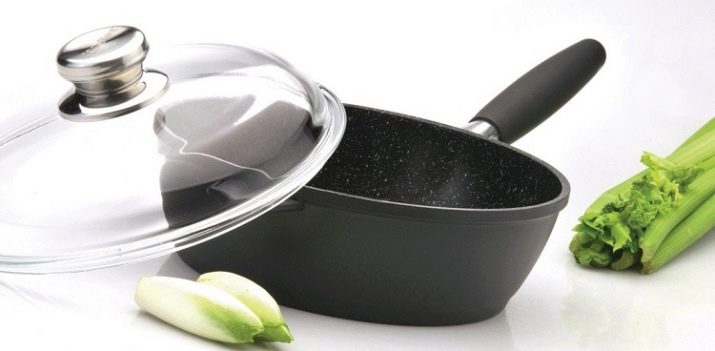
Tefal
Tefal is a world famous French brand. Known for making utensils with a non-stick coating. It stands out for its innovative solutions and non-standard inventions.
Tefal Experience stewpan. A unique development of the company, taking into account the latest trends. The casserole dish and lid are made of durable aluminum with a titanium inner and outer non-stick coating. Diameter is 26 cm. Suitable for all types of stoves, suitable for ovens. A feature of the model is the presence of a thermostat that allows you to regulate the temperature. It is limited to 230 ° C. This makes it possible to control the supply of heat and avoid overheating. Non-removable stainless steel handles.

A stewpan, without exaggeration, is simply an irreplaceable thing in the kitchen. This is what most users say.
A high quality product allows you to cook a variety of dishes in the best possible way, while saving a lot of time.
In the next video, you will find an overview of the Rondell Mocco & Latte RDA-286 stewpan.








